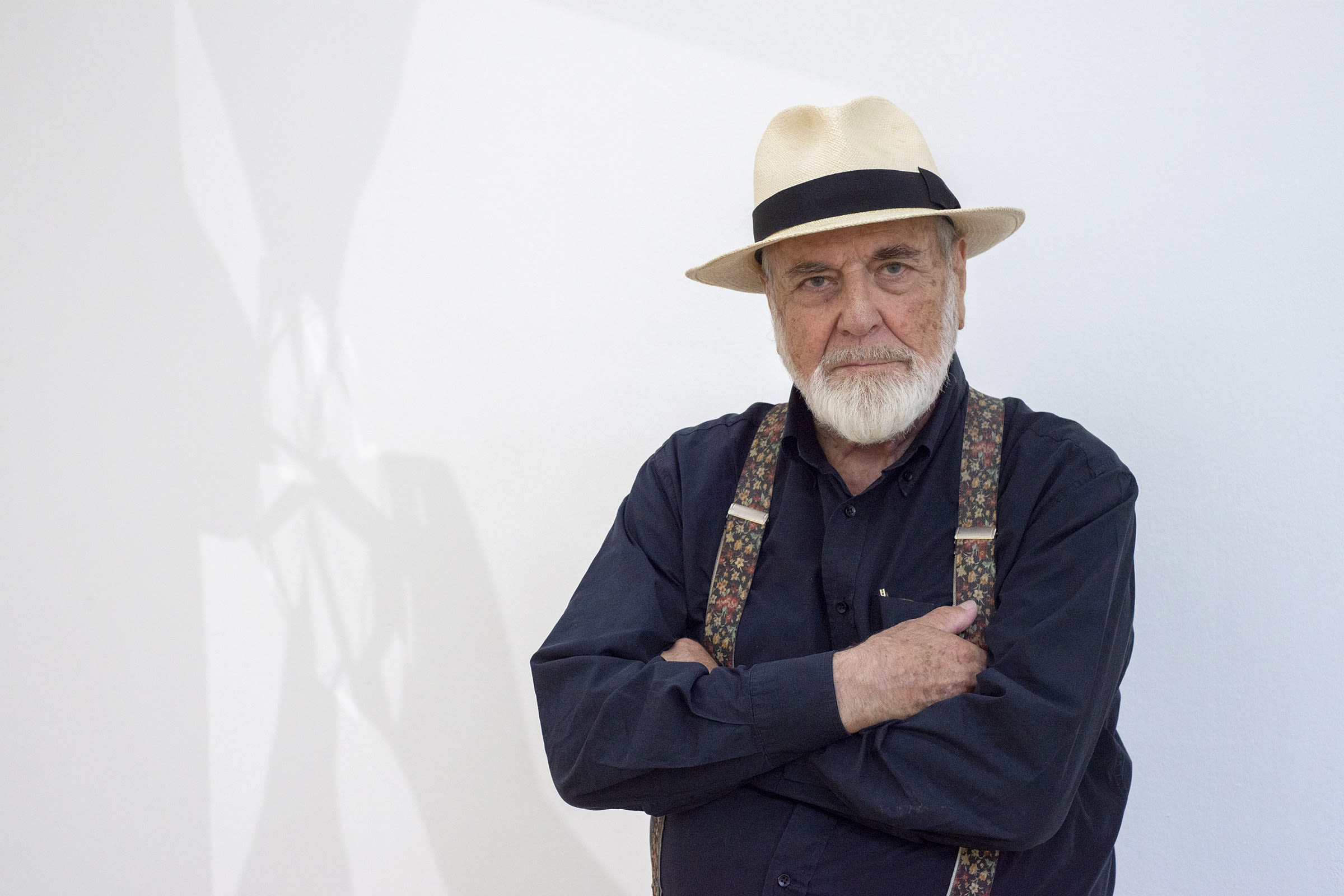This year, the Palais d’Iéna hosts an unprecedented encounter between two giants of contemporary art as part of the Paris+ par Art Basel Public Program. Together, the French artist Daniel Buren and the Italian artist Michelangelo Pistoletto, have agreed to take on this true gem of Modern Rationalist architecture.
Designed by Auguste Perret for the 1937 world fair, the Palais d’Iéna currently houses the French Economic, Social, and Environmental Council. The building is made entirely of concrete, with no cladding. The architect incorporated pink marble and green porphyry and combined simple geometric shapes (rectangles, triangles, and circles) to create new and varied colors, surfaces, and forms, as well as ingenious plays of light and shadow.
The art historian Matthieu Poirier conceived and developed Buren and Pistoletto’s extraordinary encounter with Galleria Continua’s co-director Lorenzo Fiaschi.


Florence Derieux: How did this project come about?
Lorenzo Fiaschi: In June, Matthieu Poirier invited me to meet him at the Palais d’Iéna, which I had never been to before. I was instantly struck by the symmetry, depth, and luminosity of the place. Michelangelo Pistoletto’s historical approach came to mind straight away – in particular, his work Divisione e moltiplicazione dello specchio (Division and multiplication of the mirror) from 1978. At the same time, the large windows on either side of the room immediately made us think of Daniel Buren’s works, especially his ‘windows’, which interact with the space and architecture of the places they occupy, altering them in the process.
At 85 and 90-years-old respectively, Buren and Pistoletto had never collaborated before. How did you convince them to do so?
They have known each other for a very long time and are very fond of one another, and I have been working with them both for nearly 28 years. Matthieu and I quickly had a rather clear idea of what we wanted to propose to each of them. All that remained was to convince them to work on their own projects, and then to bring them together.

What made you feel this pairing would work?
The research that both artists have carried out for so many years made this invitation feel quite natural. You have to project yourself into the philosophy of their respective practices. They themselves like to believe that people interested in their work will have a genuine experience upon discovering their installations – one that will be unique for each and every visitor, every time.
The Palais d’Iéna is a unique building that sits between Classicism and Modernism, and which is distinguished by its anthropomorphic form and perfect proportions. Did this also play a role in the design of the artists’ installation?
The installation is a new site-specific creation for the building’s famed hypostyle hall, conceived with its particular features in mind. It highlights the architecture of the space while simultaneously breaking its codes. It plays with its angles, the solemnity of the spaces, the polychrome concrete, its luminosity, and complex symmetry, as well as its urban surroundings.
What does the installation look like?
Buren worked on the windows and Pistoletto with mirrors. As such, we can think about the project in terms of light, reflections, colors, and so on, but in the end, it is the experience that matters the most. Indeed, the visitor’s body is at the heart of the work: visitors immediately enter into a physical relationship with the space and architecture. As they move through the hall, they transform it, just as they transform the installation itself. It feels complete – there is total synergy between the two works.

The project is supported by Galleria Continua (San Gimignano, Beijing, Dubai, Havana, Boissy-le-Châtel, Paris, Rome, São Paulo).
Palais d’Iéna
9, avenue d’Iéna
75016 Paris
Until October 29, 2023, from 10am to 6pm. Free public access.
More information here.
Florence Derieux is an art historian and curator.
English translation: Jacob Bromberg.
Published on October 23, 2023.
Photographs at Palais d'Iéna by Paris+ par Art Basel.